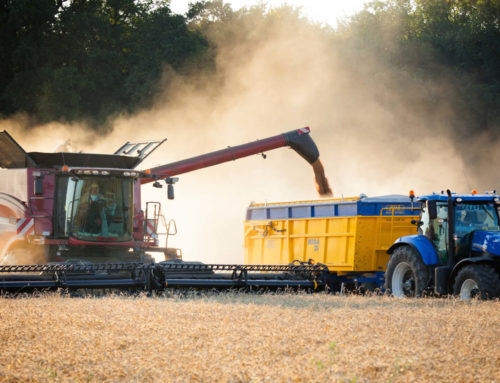With farm crops at record-high prices, you would think the Congress would seriously consider eliminating the tired old system of farm handouts and bailouts.
The U.S. House of Representatives passed their re-write of the farm bill back in July, sending the Senate a “new” farm bill that amounted to little more than recycling the old subsidy-heavy legislation with a fresh coat of paint.
Since 1995, more than $165 billion has been funneled to farm states, with annual costs to taxpayers exceeding $20 billion in many years. Essentially unchanged since the Great Depression, these farm policies no longer reflect the needs of America’s farmers, rural communities, consumers, or the taxpaying public.
At a time of record prices for corn, soy and wheat, the few tweaks that were made to the current legislation actually increases certain payments to farmers regardless of the profitability of their crop. After a few moans and groans on the House floor, the bill was kicked over to the Senate, with press releases touting its new reform-minded approach.
Last week the Senate’s “reformed” farm bill emerged from committee. And again, many crops actually saw their taxpayer-funded price supports actually increase, as average farm income approaches triple figures. After Senate Agriculture Committee Chairman Tom Harkin (D-IA) laid out some commendable reform proposals leading up to the committee’s work, he eventually succumbed to pressures form others on the committee – largely those representing cotton in the South and corn and wheat in the Midwest. The resulting bill actually could cost taxpayers as much or more than past farm bills.
To make matters worse, the Senate Finance Committee, of all places, wrote perhaps the biggest boondoggle in the Senate farm bill – a provision creating a permanent disaster fund. The proposed $5 billion disaster slush fund will be funded by an arcane provision in current law that imposes tariffs on agriculture imports – money that currently goes to the general treasury. But by no means is $5 billion a firm ceiling, since under the provision, the Secretary of Agriculture has full discretion to spend the funds – making this an open-ended giveaway to key farm states. Specifically, the states of Montana and North Dakota would be among the biggest beneficiaries. Not surprisingly, Senate Finance Committee Chairman Max Baucus represents Montana.
Disaster funding has always been a political football. Pumping free federal cash into politically important areas around election time is a tried and true tactic. And with this pot of dough available for the discretionary use of whoever happens to hold the White House, we are talking political pork of unprecedented proportions.
To make matters worse, some in Congress have already mentioned that $5 billion is probably not going to be enough – suggesting that one to two billion dollars more a year would probably be thrown at farmers in flood or drought –prone areas. In Congress bad ideas never get better, they only get bigger.
Record crop prices provide a golden opportunity to reform the recycled plans of the past, to focus on new ways to solidify the farm safety net, and to better align current farm programs with market forces. The current subsidy system is broken for most farmers and rural communities, and for all taxpayers. Agriculture subsidies cost taxpayers billions of dollars annually, are inequitably distributed, and undermine our international trade relationships. If the Senate is serious about reform, they should scrap their current direction of propping up the failed subsidies of the past.










